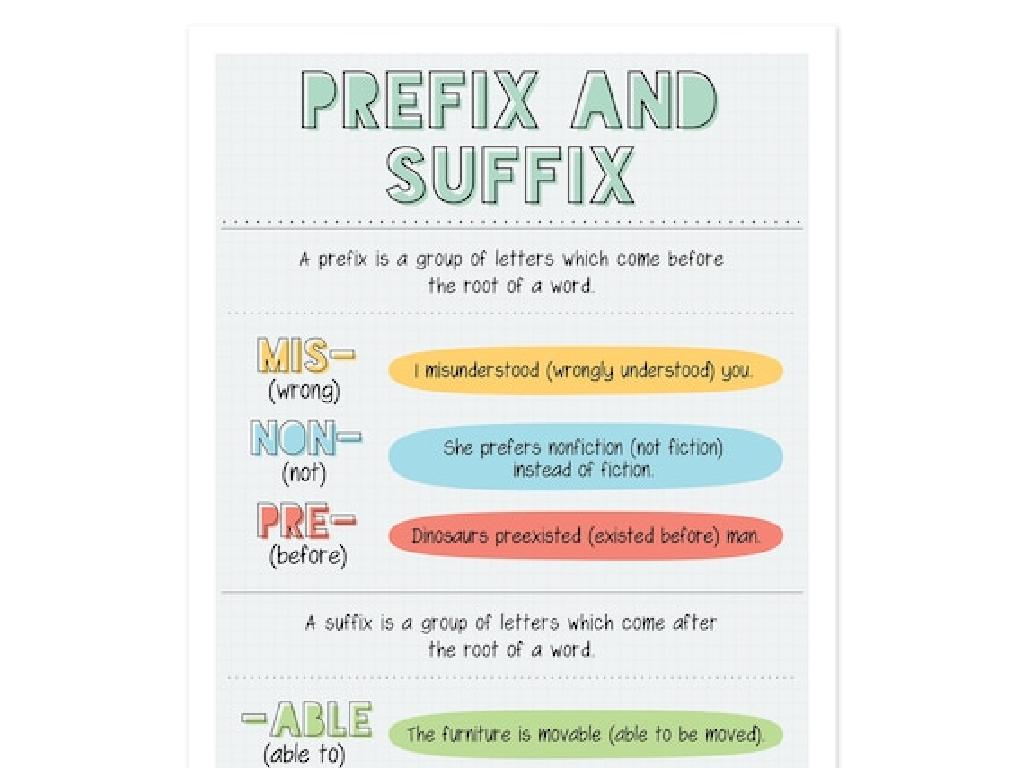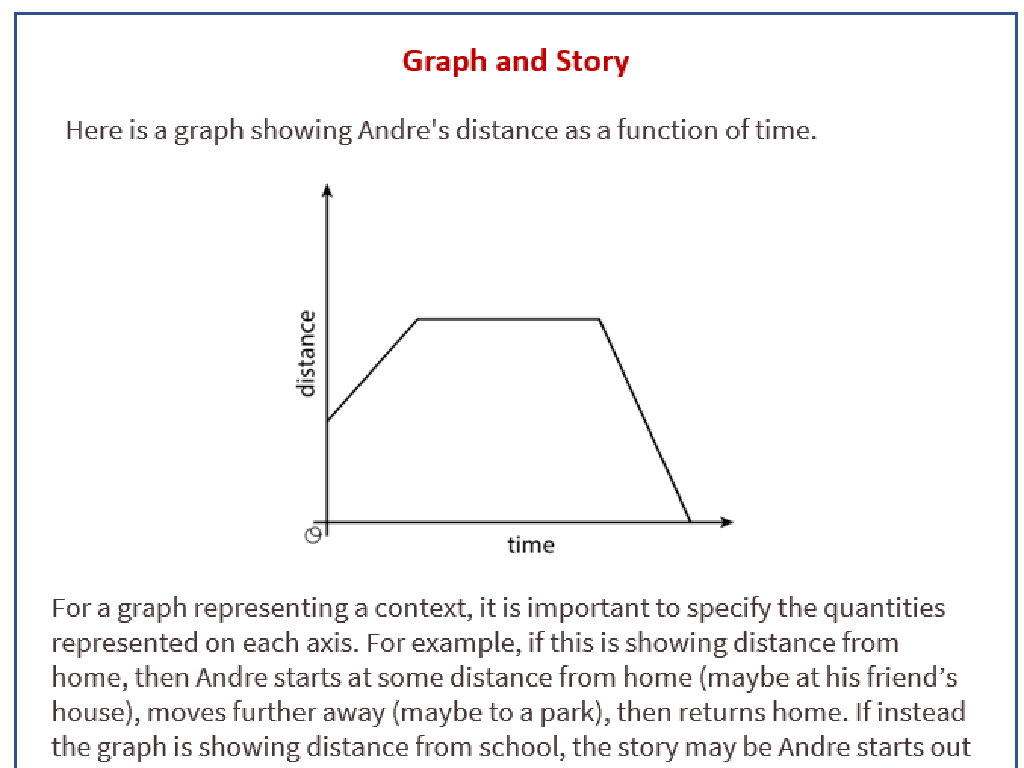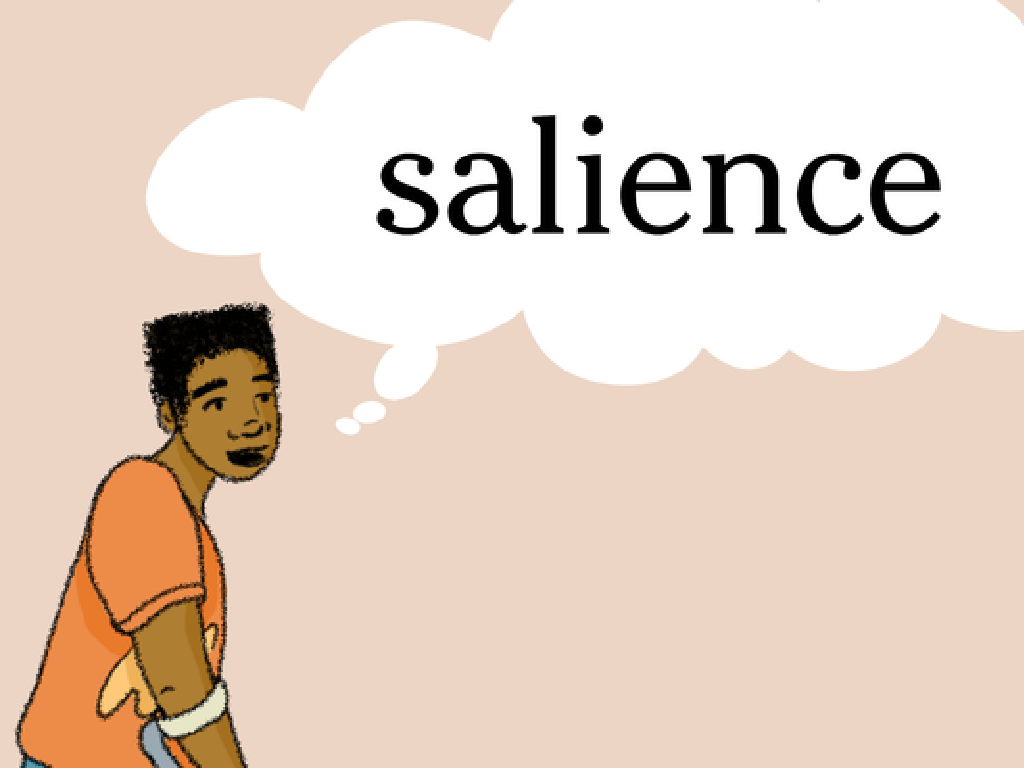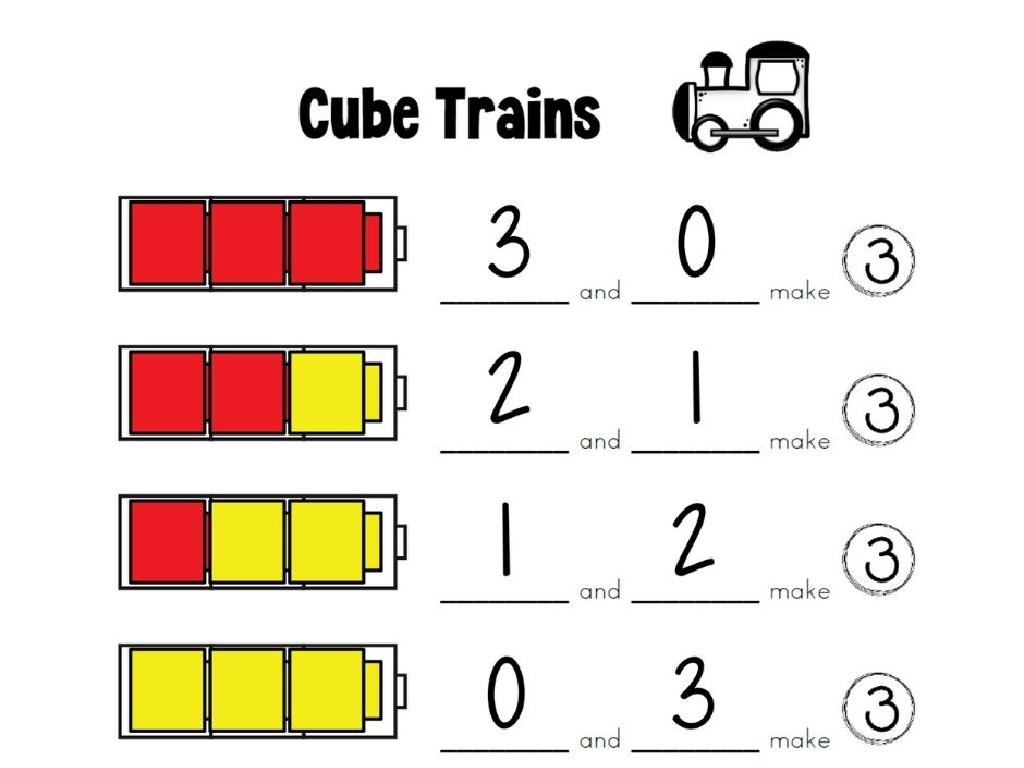Choose The Letter That Matches The Consonant Sound: Review
Subject: Language arts
Grade: First grade
Topic: Letter-Sound Associations
Please LOG IN to download the presentation. Access is available to registered users only.
View More Content
Welcome to Letter Sounds!
– Exploring sounds and letters
– Matching sounds to letters
– Listen to the sound, then choose the letter that makes it
– Become a letter-sound detective
– Use your ‘detective’ skills to find the right letter for each sound
– Fun activities ahead
|
This slide is designed to introduce first graders to the concept of matching consonant sounds with their corresponding letters. Begin the lesson by engaging students with the idea that they are ‘detectives’ looking for clues to solve the ‘mystery’ of sounds. Provide examples of consonant sounds and ask the students to identify the letter that matches. Encourage participation by making it a game where each correct match is a ‘clue’ solved. Prepare a set of activities such as listening to sounds and picking the right letter, matching games, and perhaps a worksheet for them to fill out as they listen to words and identify the starting consonant sound. The goal is to make the learning process interactive and enjoyable, reinforcing their understanding of letter-sound associations.
Consonant Sounds Review
– What is a consonant?
– Letters that are not vowels. Like B, C, D…
– Counting consonant letters
– There are 21 consonants in the alphabet.
– Each consonant’s unique sound
– Consonants like ‘T’ and ‘S’ have their own sounds.
– Practice matching sounds
– We’ll listen to sounds and choose the right letters.
|
This slide introduces the concept of consonants to first graders. Begin by explaining that consonants are the letters in the alphabet that are not vowels (A, E, I, O, U). Highlight that there are 21 consonant letters, and each one has a unique sound. Use examples like ‘T’ as in ‘top’ and ‘S’ as in ‘sun’ to illustrate the sounds. Engage the students in a class activity where they listen to different consonant sounds and then choose the correct letter that matches the sound. This will help reinforce their understanding of letter-sound associations and improve their phonetic skills.
Matching Sounds to Letters
– Listen to various sounds
– Guess the matching letter
– Sounds in different word positions
– Sounds can be initial, medial, or final
– Engage in a fun sound game
– We’ll play a game to match sounds to letters
|
This slide is designed to help first graders practice their understanding of consonant sounds and their ability to match these sounds to the correct letters. Start the activity by playing different sounds and asking the students to guess the corresponding letter. Emphasize that the sounds they hear could be at the beginning (initial), middle (medial), or end (final) of words. Use a fun and interactive game to reinforce this concept, such as a ‘sound bingo’ where students cover the letter on their bingo card that matches the sound you play. This will help students to actively engage with the material and apply their knowledge in a playful context. Be prepared with a variety of sounds and words to ensure that all students have the opportunity to participate and learn.
Consonant Sound Matching Game
– Listen to the sound I make
– Choose the letter for the sound
– Use picture clues to help
– For example, a picture of a cat for the ‘c’ sound
– Some letters have multiple sounds
– Like ‘c’ in cat and circle
|
This interactive game is designed to help first graders associate letters with their corresponding consonant sounds. Start by making a consonant sound and ask the students to identify the letter that matches it. Use visual aids like pictures to reinforce the association between sounds and letters. Remind the students that some letters can represent different sounds and provide examples. Activities could include matching sounds to letters on a worksheet, using flashcards, or playing a digital matching game. Encourage participation and provide positive feedback to support learning.
Practice Time: Matching Sounds to Letters
– Write letters for the sounds you hear
– Be a sound detective
– Listen carefully and think: What letter makes that sound?
– It’s okay to guess and try again
– If you don’t know, make your best guess!
– We learn from mistakes!
– Every try helps you get better!
|
This slide is for a class activity focused on reinforcing the students’ understanding of letter-sound associations. Play a sound and ask the students to write down the letter that matches the sound they hear. Encourage them to use their ‘sound detective’ skills to identify the correct letter. Remind them that it’s perfectly fine to guess and that making mistakes is a part of the learning process. Provide positive reinforcement as they attempt to match sounds to letters. For the activity, consider having a variety of sounds for different consonants and repeat the exercise to ensure practice and reinforcement. Offer assistance and correct gently, ensuring that each child feels supported and encouraged.
Reviewing Consonant Sounds
– Recap today’s sounds and letters
– Repetition strengthens memory
– Repeating sounds helps lock them in our memory
– Class repetition of sounds
– We’ll say the sounds as a group to reinforce learning
– Practice makes perfect
|
This slide is aimed at reinforcing the letter-sound associations learned in today’s class. Start by reviewing the sounds and corresponding letters that were covered. Emphasize the importance of repetition in learning and memory retention. Engage the whole class in repeating the sounds together to create a fun and interactive learning environment. Encourage the students to practice the sounds loudly and clearly. This activity not only helps students remember the sounds but also builds their confidence in pronunciation. As an extension, consider breaking the class into smaller groups and have them practice with each other, or ask individual students to demonstrate the sounds to the class.
Sound Bingo: Matching Sounds to Letters
– Let’s play Sound Bingo together!
– Listen carefully to each sound
– Sounds will be consonants like ‘b’, ‘t’, or ‘s’
– Find the matching letter on your bingo card
– Each sound matches a letter on your card
– Match all sounds and letters to win!
|
This interactive class activity is designed to help first graders review and reinforce their understanding of letter-sound associations through a fun game of Sound Bingo. Each student will receive a bingo card with a variety of letters on it. The teacher will play or make a series of consonant sounds, and students will have to identify the corresponding letter on their bingo card. The goal is to listen for the consonant sounds and match them to the correct letters. The first student to match all sounds with the letters on their card and call out ‘Bingo!’ wins a sticker. This activity encourages active listening, quick thinking, and provides a tactile learning experience. Prepare different sound clips in advance and ensure that each bingo card has a unique combination of letters to maximize student engagement and participation.
Super Sound Detectives!
– Celebrate your matching skills
– Practice sounds with family
– Try sounding out words during storytime
– Exciting new sounds ahead
– More fun games next class
– Games help us remember our sounds better
|
This slide is meant to conclude the lesson on consonant sounds with positive reinforcement, encouraging the students to continue practicing at home. Emphasize the importance of practice to make the letter-sound associations second nature. Suggest that they engage with family members in reading sessions where they can apply their knowledge of sounds. Let them know that their learning journey will continue with new sounds to keep the lessons fresh and engaging. Prepare a variety of games for the next class to ensure that learning remains a fun and interactive experience.





